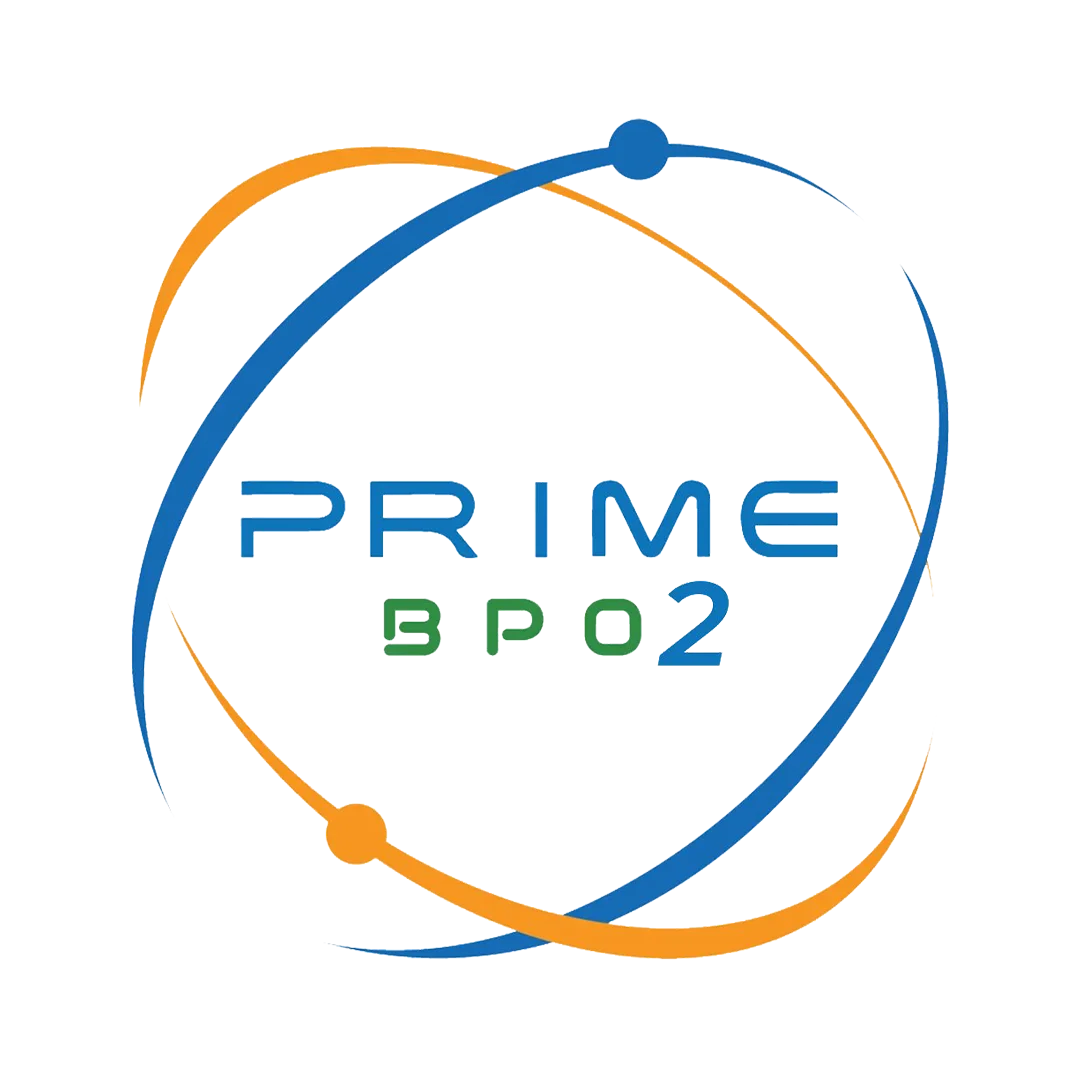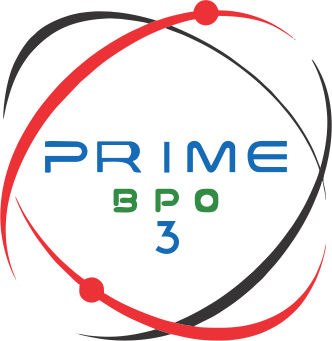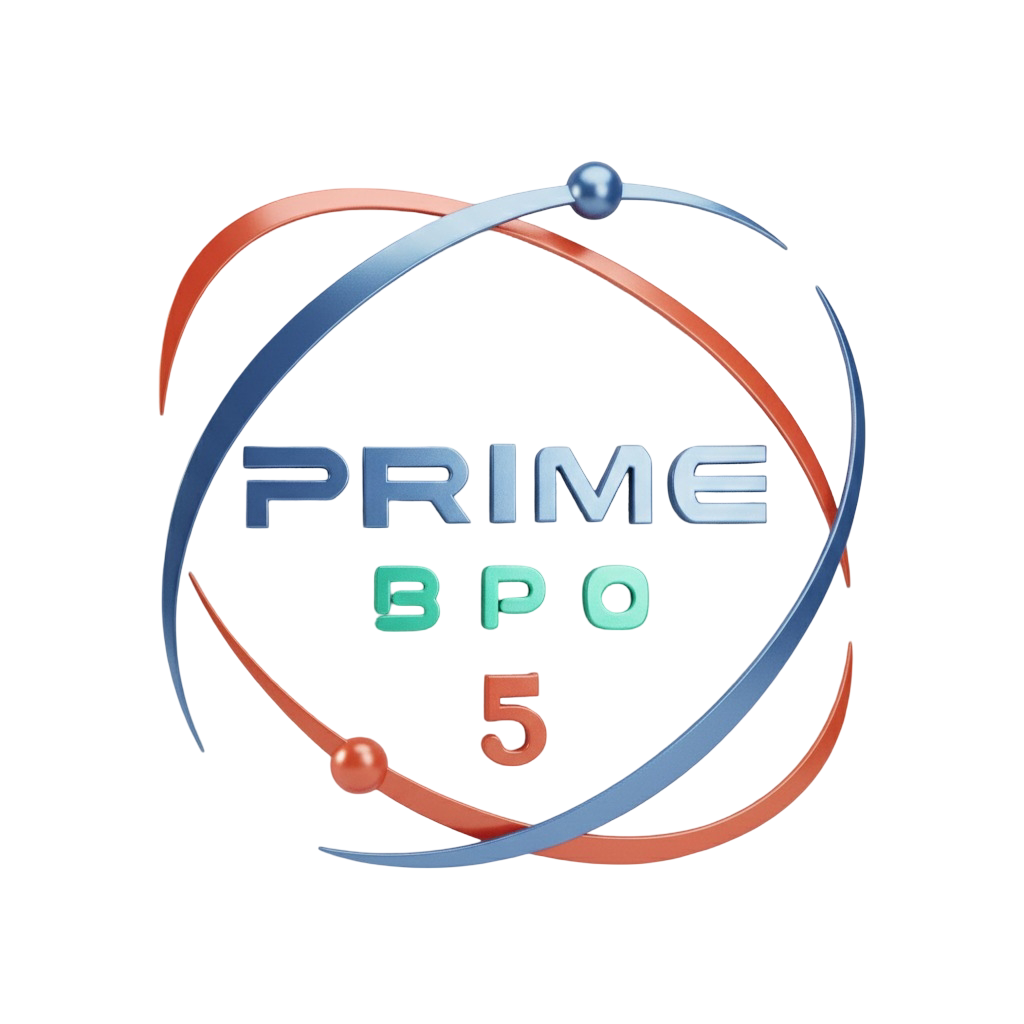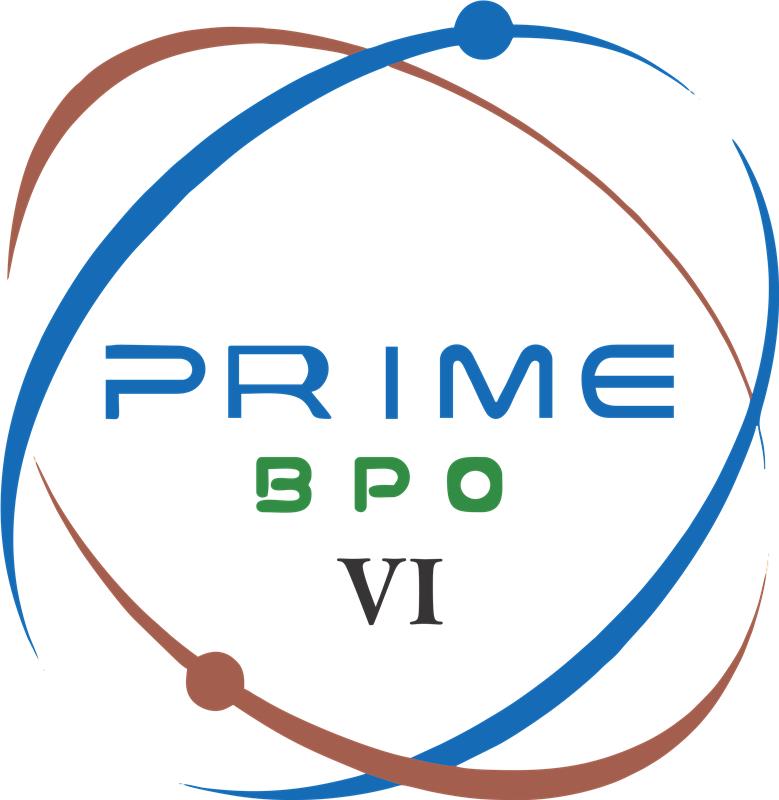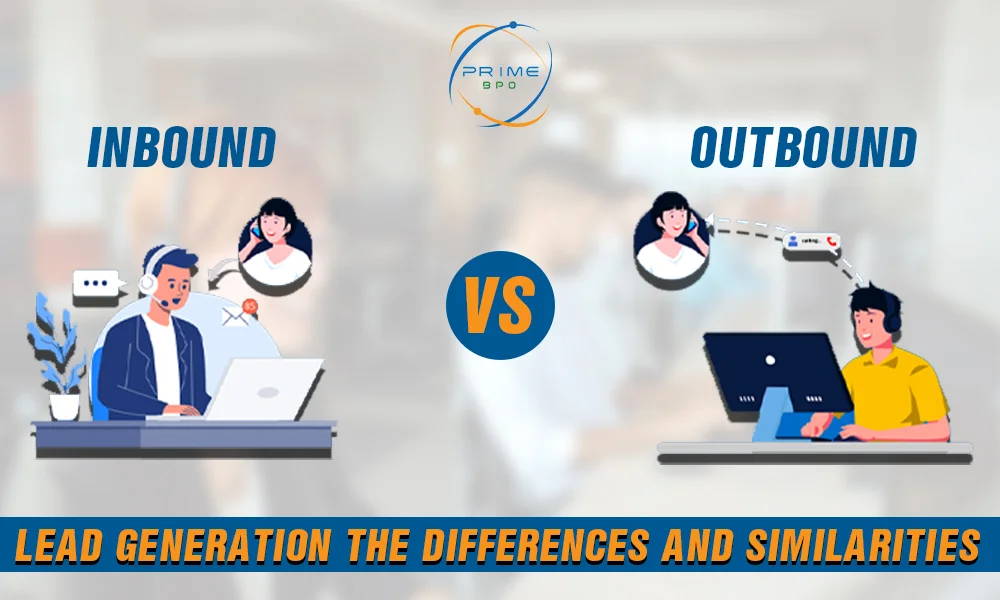In the competitive world of marketing, businesses use a variety of marketing methods to attract and convert customers. Inbound and outbound lead generation are the two most popular methods.
Like fishing, inbound lead generation involves casting a line and waiting for potential customers (fish) to come to you. Outbound lead generation involves looking for potential customers out in the field.
However, it is important to consider your business goals and resources when choosing the right approach for your business. This guide will help you choose the right lead generation strategy for your business, comparing inbound vs outbound lead generation.
What is an Inbound Lead?
The term "inbound lead" refers to an interested customer who contacts the business or expresses interest in the products or services it offers. Organic leads come to you because they are already searching for information, products, and services related to what you provide. To attract and engage potential customers, inbound marketing strategies focus on creating valuable and relevant content.
Get Free Quotes
Customized Options Await
Here are some examples of inbound leads:
Website Visitor: Someone who finds your website through a search engine, social media channel, or another online channel and expresses interest in it.
Content Subscribers: People who subscribe to your blog, newsletter, or other channels to receive updates from your company.
Form Submissions: Customers who fill out contact forms, request information, or sign up for trials, demonstrate a direct interest in your products.
Social Media Engagement: The number of individuals who like, share, comment, or engage with your social media posts, indicating an interest in your brand.
Because they have already shown an interest in your business, inbound leads are typically considered high-quality leads.
How does Inbound Lead work?
Here's how it works:
- Creating high-quality content, whether in the form of blog posts, videos, podcasts, infographics, or social media updates, is key to inbound marketing.
- To rank well in search results, you need to optimize your content for search engines. By doing this, your website receives organic traffic.
- Once visitors land on your website, you guide them through a conversion funnel, converting them into leads and eventually customers.
- The key to successful inbound marketing is personalizing your content according to your target audience's interests and needs.
What is an Outbound Lead?
An outbound lead also called a cold lead, is a lead in which you contact a potential client or prospect proactively. A business generates outbound leads by identifying and approaching them through various outreach methods, unlike inbound leads that come to them naturally. Strategies for generating outbound leads tend to be more direct and proactive.
Common examples of outbound leads may include:
Cold Calls: An outbound sales representative calls a business or individual to introduce products and services.
Cold Emails: Informing potential leads about your offerings and encouraging them to contact you.
Direct Mail: Distributing promotional materials to a list of potential customers.
Social Media Ads: Reaching specific audiences through targeted social media advertising.
It is generally considered that outbound leads are of lower quality because they may not have expressed any initial interest in your business. It is still possible to generate valuable prospects through effective outbound lead-generation strategies.
How does Outbound Lead work?
Here's how it works:
- To reach potential customers, outbound marketing methods include cold calling, sending cold emails, or even sending direct mail.
- Your messaging is tailored to the needs and interests of your targeted leads.
- To generate immediate action and interest, outbound marketing aims to create an instant response.
- Other common outbound strategies include advertising, trade shows, and events.
Similarities between Inbound vs Outbound Lead Generation
Despite the differences between inbound vs outbound lead generation strategies, some similarities can be seen:
1- Customer Focus
It is ultimately important to understand and cater to the needs of potential customers when developing an inbound or outbound lead generation strategy. Identifying and engaging potential customers for your products or services are the goals of these efforts.
2- Data-Driven
Data analysis and constant monitoring are essential to the success of both approaches. Measurement of conversion rates, click-through rates, and returns on investment are among the metrics used by both inbound and outbound marketers.
3- Conversion Goals
Lead generation, whether inbound or outbound, is ultimately about converting leads into paying customers. Whatever the source of a lead, guiding them through the sales funnel is the same regardless of whether they are generated via an inbound or outbound strategy.
4- Sales Funnel
Using either approach involves nurturing leads and moving them closer to buying. As part of this process, there are usually stages such as being aware, being interested, being considered, and making a decision.
5- Marketing Automation
Both inbound and outbound marketing efforts can be streamlined using marketing automation tools and software. Lead management, audience segmentation, and personalized messaging can be managed using these tools.
6- Customer Relationship Management (CRM)
Both approaches rely heavily on CRM systems to manage leads. It is imperative to maintain a centralized database and track interactions regardless of whether the lead was generated through inbound or outbound efforts.
7- Content Utilization
In both strategies, content remains a key component. Outbound marketing often uses content for email marketing or sales collateral, while inbound marketing focuses on creating valuable and engaging content.
8- Integration
The combination of both inbound and outbound strategies can prove highly successful for many businesses. Combining organic traffic with targeted advertising is one example of using inbound-generated content in outbound email campaigns.
Get Free Quotes
Customized Options Await
Inbound vs Outbound Lead Generation: Differences
For your business to acquire potential customers or leads, you can use inbound vs outbound lead generation strategies. Their approaches to attracting and engaging leads differ. The two strategies are compared in more detail below:
Inbound Lead Generation:
-
Passive Approach: Inbound lead generation is passive, meaning that potential customers are attracted passively to relevant and valuable content. Various types of content can be created, including blog posts, videos, social media updates, and infographics.
-
Customer-Initiated: An inbound lead is usually initiated by a customer or prospect. To purchase products, services, or information about what your business offers, they visit your website.
-
Content-Centric: The creation of content and the optimization of SEO are crucial to the generation of inbound leads. Search engine rankings are essential to drawing organic traffic to your content.
-
Conversion Funnel: In the conversion funnel, visitors are guided into signing up for newsletters, downloading resources, or requesting more information once they visit your website or platform.
-
Personalization: Personalization is an important aspect of inbound marketing, tailoring messages and content to your target audience's needs.
-
Long-Term Focus: A strong online presence and inbound marketing strategies require time, but they often provide long-term benefits and consistent lead generation.
Outbound Lead Generation:
-
Active Approach: In outbound lead generation, potential customers are contacted directly by the source. A cold call, an email, a direct mail piece, or an advertisement may be used in this process.
-
Business-Initiated: Your business generates outbound leads. Potential customers who were not actively searching for your products or services are identified and approached.
-
Targeted Lists: The messaging you use should be tailored to the needs and interests of each potential lead you create.
-
Immediate Response: A key objective of outbound marketing is to create instant interest and action. It can lead to faster conversions, but they are often more challenging.
-
Cost Variation: Outbound lead generation can be more expensive when it involves paid advertising and extensive outreach.
-
Quantity vs. Quality: As the primary goal of outbound marketing is to reach as many potential prospects as possible, quantity may be prioritized over quality.
Thus, inbound lead generation involves reaching out directly to potential customers via various outreach methods by providing valuable content and organic search results, while outbound lead generation involves attracting and engaging customers actively seeking your products or services.
Which is better: Inbound vs Outbound Lead Generation
You need to carefully consider the factors specific to your business, such as the nature of your industry, your target audience, your resources, and your purposes, before choosing between inbound vs outbound lead generation. To help you decide which method may be right for your business, consider the following:
You should consider inbound lead generation if:
Your online presence is strong
By generating organic traffic from valuable content, inbound marketing can capitalize on your business's existing online presence.
Actively Searching Your Target Audience
Your target audience is more likely to respond to inbound marketing if they actively seek information or solutions within the industry that you serve. Inbound methods can be effective if your product or service is commonly researched on the Internet.
Get Free Quotes
Customized Options Await
Content Creation Is Within Your Reach
Content creation is a crucial component of inbound marketing. It's a good fit if you have a strong track record of creating high-quality, relevant content.
Goals for the future
Inbound marketing can provide long-term growth results for your business. The benefits may take time to emerge, but they are long-lasting.
You should consider outbound lead generation if:
It Is Not Actively Searched By Your Target Audience
If you want to reach your target audience where they are, even if they are not actively searching for your product or service online, outbound methods can help.
Results Must Be Delivered Quickly
The results of outbound marketing are often faster. Cold calling and email campaigns can be more effective if you need leads and sales quickly.
Targeted Lists
With outbound marketing, you can reach the right people with your message by creating or accessing a highly targeted list of potential leads.
Advertising Budgeted
Paid social media advertising or pay-per-click (PPC) campaigns are examples of outbound strategies that involve advertising costs. Inbound methods may be a viable option if you can afford the costs and you need results as soon as possible.
You Have a Skilled Direct Sales Team
Outbound methods can be an effective way for your sales team to reach out directly to potential customers and close deals through phone calls, emails, and in-person meetings.
It is often more effective to combine both inbound and outbound strategies. By leveraging each method's strengths and mitigating its weaknesses, you can maximize the results. Whatever your lead generation strategy, it's imperative that you continually measure and adapt it to meet your market dynamics and evolving business goals.
Final Thoughts
In summary, both inbound vs outbound lead generation strategies have their unique strengths. A business with a strong online presence and a target audience actively seeking its products or services is ideal for inbound marketing, which focuses on attracting customers through valuable content and organic search results. For businesses looking for faster results and to target specific audiences, outbound marketing, with its direct contact with potential customers, can be beneficial. Ultimately, a combination of both strategies is often the best approach, tailored to your business's specific needs and goals.
FAQs
1- What is the success rate of inbound vs outbound?
It depends on the industry and specific strategies used whether inbound or outbound marketing is more successful. The success rate of inbound marketing tends to be higher over time since it builds strong, engaged audiences, whereas the success rate of outbound marketing tends to be lower.
2- Do outbound leads cost 39% more than inbound leads?
On average, outbound leads cost around 39% more than inbound leads, primarily due to the higher cost of outbound marketing tactics like advertising, cold calling, and direct mail.
3- Which is better inbound or outbound?
Your target audience, industry, and goals determine whether inbound marketing is more effective than outbound marketing. Regarding long-term benefits and cost-effectiveness, inbound marketing is often preferable to outbound marketing, which targets specific audiences and can deliver immediate results.
4- What are the two differences between inbound and outbound?
Customers are attracted to inbound marketing based on their approach and engage with it at a different time from outbound marketing. Against outbound marketing, which involves proactively contacting customers through methods such as cold calling and advertising, inbound marketing focuses on attracting customers through valuable content and organic search results.
5- Are inbound leads more likely to convert?
A lead from an inbound source is generally more likely to convert than one from an outbound source. The reason for this is that inbound leads are more likely to convert into customers since they have already expressed interest in your products or services by actively seeking out information.
